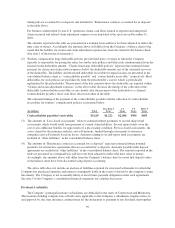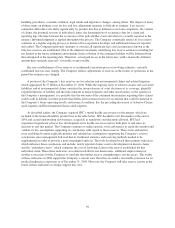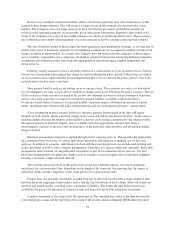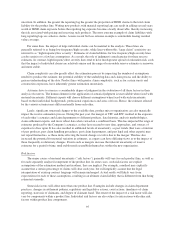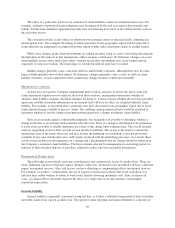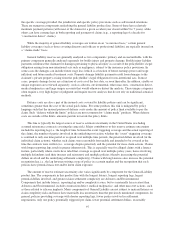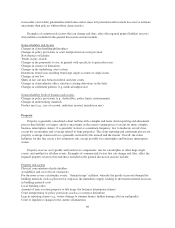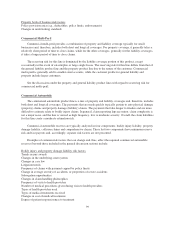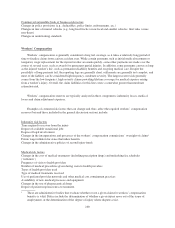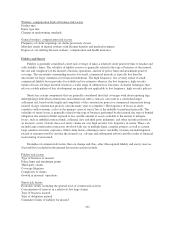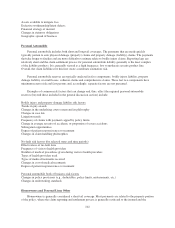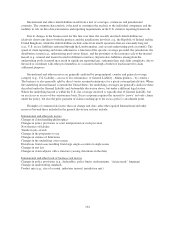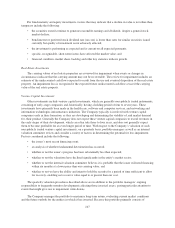Travelers 2004 Annual Report Download - page 110
Download and view the complete annual report
Please find page 110 of the 2004 Travelers annual report below. You can navigate through the pages in the report by either clicking on the pages listed below, or by using the keyword search tool below to find specific information within the annual report.
foreseeable (and stable) potential hazards/claims and no mass tort potential result in much less reserve estimate
uncertainty than policies without those characteristics.
Examples of common risk factors that can change and, thus, affect the required general liability reserves
(beyond those included in the general discussion section) include:
General liability risk factors
Changes in claim handling philosophies
Changes in policy provisions or court interpretation of such provision
New theories of liability
Trends in jury awards
Changes in the propensity to sue, in general with specificity to particular issues
Changes in statutes of limitations
Changes in the underlying court system
Distortions from losses resulting from large single accounts or single issues
Changes in tort law
Shifts in law suit mix between federal and state courts
Changes in claim adjuster office structure (causing distortions in the data)
Changes in settlement patterns (e.g. medical malpractice)
General liability book of business risk factors
Changes in policy provisions (e.g., deductibles, policy limits, endorsements)
Changes in underwriting standards
Product mix (e.g., size of account, industries insured, jurisdiction mix)
Property
Property is generally considered a short tail line with a simpler and faster claim reporting and adjustment
process than liability coverages, and less uncertainty in the reserve setting process (except for more complex
business interruption claims). It is generally viewed as a moderate frequency, low to moderate severity line,
except for catastrophes and coverage related to large properties. The claim reporting and settlement process for
property coverage claim reserves is generally restricted to the insured and the insurer. Overall, the claim
liabilities for this line create a low estimation risk, except possibly for catastrophes and business interruption
claims.
Property reserves are typically analyzed in two components, one for catastrophic or other large single
events, and another for all other events. Examples of common risk factors that can change and, thus, affect the
required property reserves (beyond those included in the general discussion section) include:
Property risk factors
Physical concentration of policyholders
Availability and cost of local contractors
For the more severe catastrophic events, “demand surge” inflation, whereby the greatly increased demand for
building materials such as plywood far surpasses the immediate supply, leading to short-term material increases
in building material costs
Local building codes
Amount of time to return property to full usage (for business interruption claims)
Court interpretation of policy provisions (such as occurrence definition)
Lags in reporting claims (e.g., winter damage to summer homes, hidden damage after an earthquake)
Court or legislative changes to the statute of limitations
98




